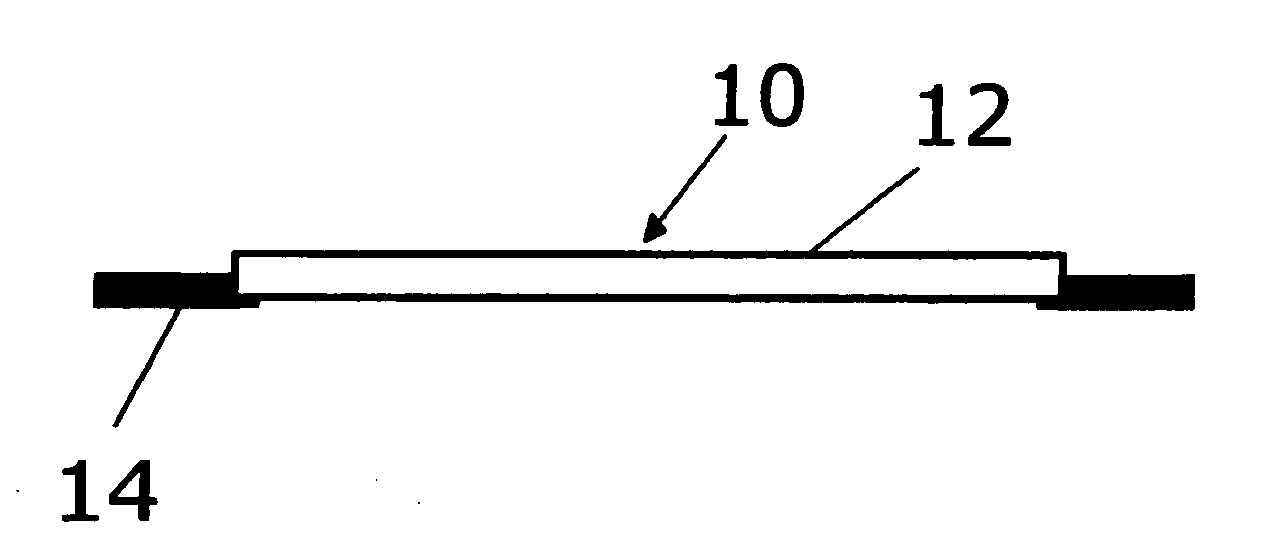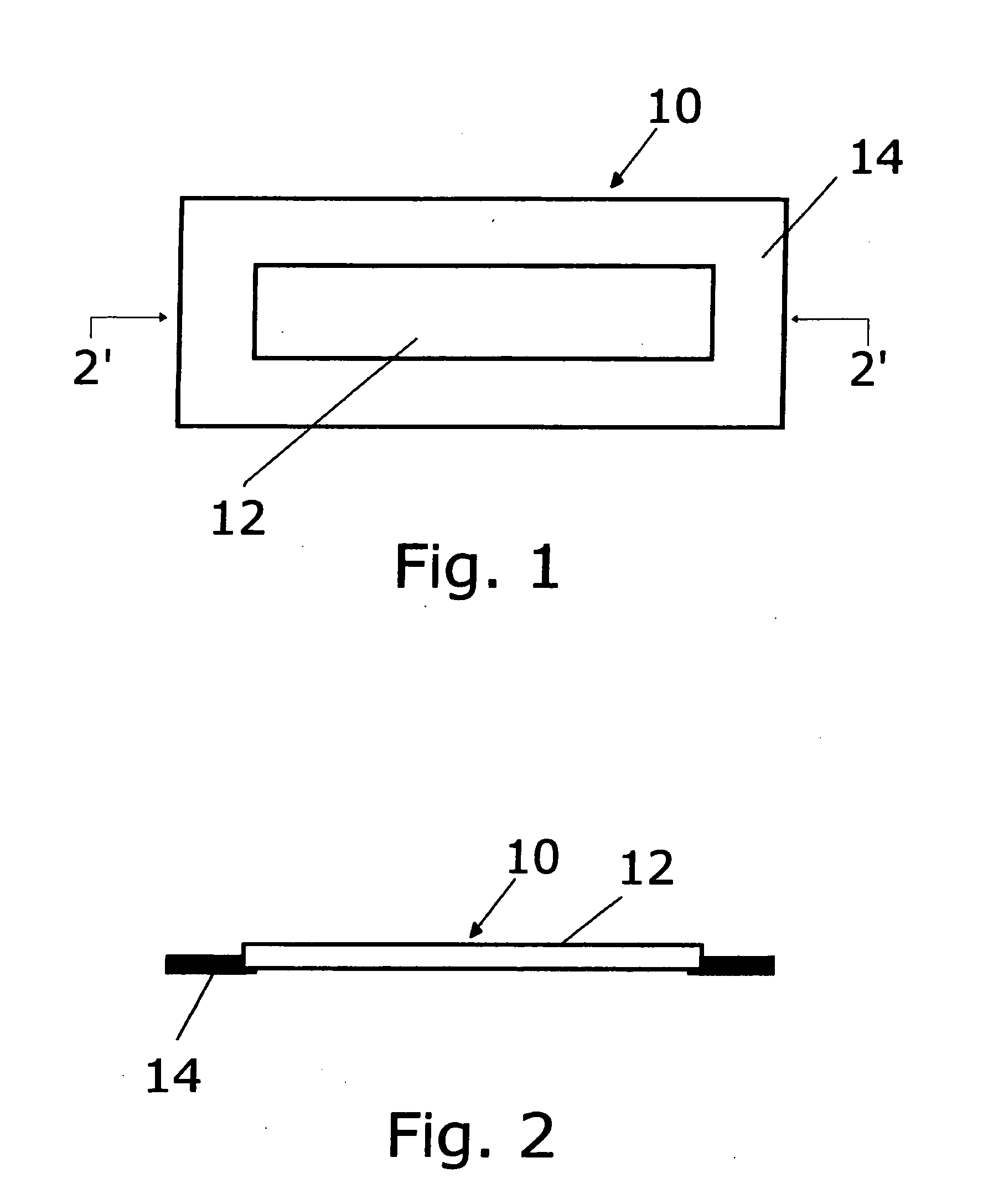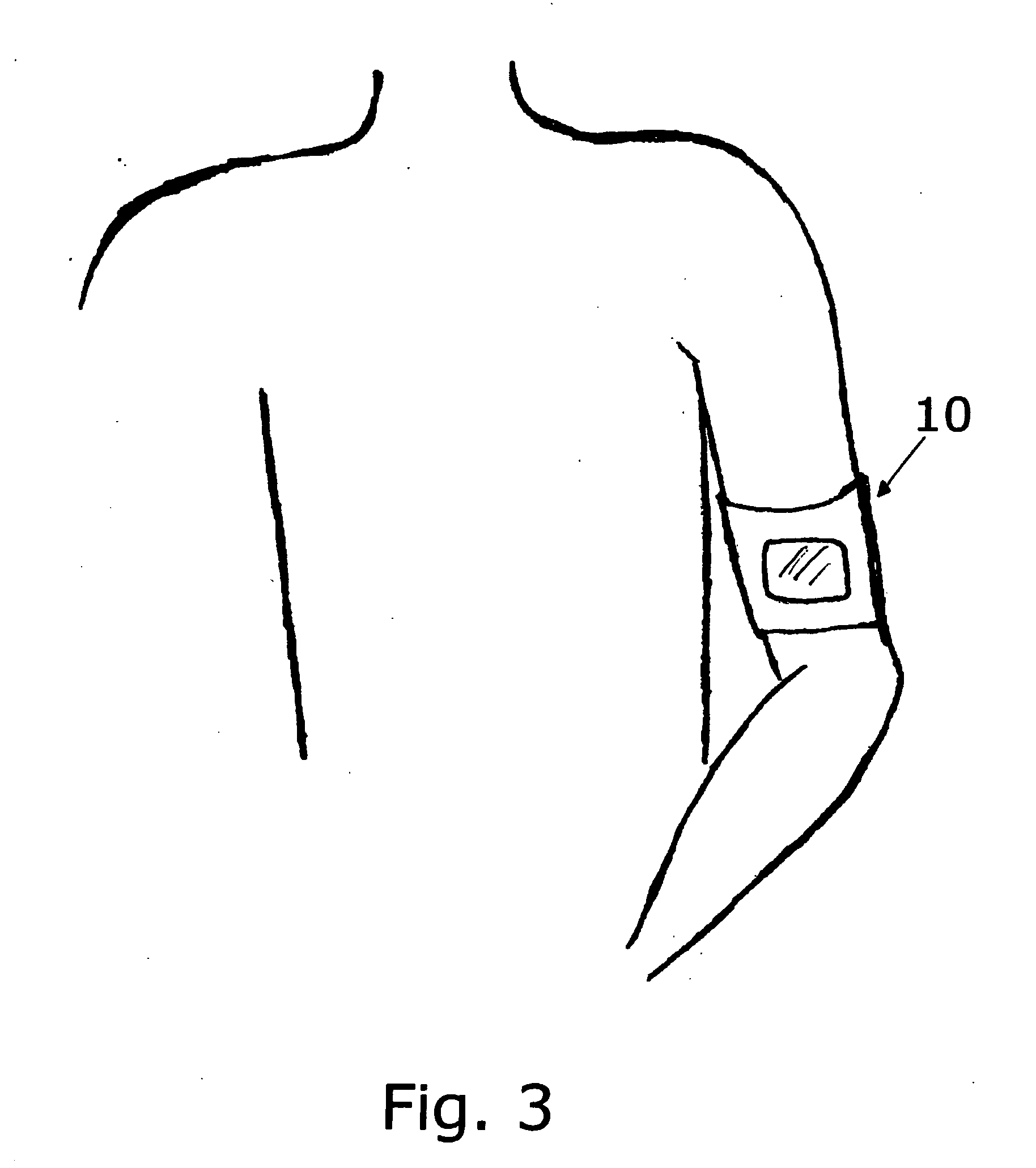Polyurethane dressing and method for making same
a polyurethane and wound care technology, applied in the field of wound care dressings, can solve the problems of tearing the wound, leaving fibrous fragments in the wound, and the number of major problems encountered in the present day wound care dressings, and achieve the effect of preventing wound leakag
- Summary
- Abstract
- Description
- Claims
- Application Information
AI Technical Summary
Benefits of technology
Problems solved by technology
Method used
Image
Examples
Embodiment Construction
[0031]The best mode and the preferred embodiment of the novel wound care dressing is shown generally in FIGS. 1 through 4.
[0032]FIG. 1 illustrates a wound care dressing or sponge 10 formed with an inner porous polyurethane sponge or foam material body 12 with a substantially planar top and bottom surface having a thickness ranging from about 1 mm to about 3 mm in thickness, preferably about 2 mm in thickness. The use of the terms foam or sponge to describe the body of the wound dressing is interchangeable. The wound dressing body is naturally soft and requires no hydration prior to application while sustaining bacteriostatic activity for up to 7 days. The dressing absorbs bacteria-laden exudate out of and away from the wound which facilitates healing and aids in patient comfort. Bacteriostatic dressings better manage bioburden, which helps the body's own immune system restore bacterial balance. An outer adhesive covering 14 of film such as polyurethane, polyester, hydrogel, and hydr...
PUM
| Property | Measurement | Unit |
|---|---|---|
| Fraction | aaaaa | aaaaa |
| Fraction | aaaaa | aaaaa |
| Fraction | aaaaa | aaaaa |
Abstract
Description
Claims
Application Information
 Login to View More
Login to View More - R&D
- Intellectual Property
- Life Sciences
- Materials
- Tech Scout
- Unparalleled Data Quality
- Higher Quality Content
- 60% Fewer Hallucinations
Browse by: Latest US Patents, China's latest patents, Technical Efficacy Thesaurus, Application Domain, Technology Topic, Popular Technical Reports.
© 2025 PatSnap. All rights reserved.Legal|Privacy policy|Modern Slavery Act Transparency Statement|Sitemap|About US| Contact US: help@patsnap.com



